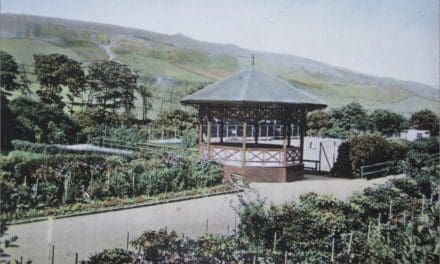How like a winter hath my absence been
From thee, the pleasure of the fleeting year!
What freezings have I felt, what dark days seen!
What old December’s bareness everywhere!
By Gordon the Gardener
William Shakespeare, summing up December in his Sonnet 97, seems have failed to see the beauty that surrounds us in the last month of the year.
The holly is a tree with berries that reflect the light and add colour to the dark days of Yule.
This is one reason why people bring it into their homes – but it has another significance as well.
Christian symbolism connected the spiny leaves with Jesus’ crown of thorns. The berries became associated with the drops of blood shed for humanity’s salvation. This is related in the Christmas carol ‘The Holly and the Ivy.’
Holly berries also feed garden birds, as all berries do when winter sets in. Others are pyracantha which are available with berries in several colours. One berried shrub can support up to 300 species of creatures including birds, moths and butterflies and many invertebrates.
Holly, pyracantha, hawthorn and sea buckthorn (hippophae rhamnoides) all have berries and make excellent hedges, which are beneficial to the environment.
The modern trend amongst house builders is to surround the garden with 6ft high wooden fences which will not last, unlike a hedge.
Bare-rooted hedging plants can be had from a good nursery supplier and will cost a fraction of potted ones from a garden centre.
A trench a spade depth should be taken out and manure or compost should be forked into the bottom of the trench along with bonemeal.
READ MORE: Look back to the warmer months with Gordon the Gardener’s monthly blogs
The whips can be planted in a double row 18in apart. This job can be done from now until late winter.
In the south of England large clumps of mistletoe can be see hanging from trees. But in Yorkshire it is rare.
I have seen an odd clump growing on apple trees, one of its favourite hosts, along with hawthorn, poplar and lime. I have, however, seen no berries.
Mistletoe is like holly in that it has male and female plants so a lack of one will result in no berries.
The best-known tradition is the kissing one – hanging mistletoe high in a room and kissing loved ones, or complete strangers.
Folklore says druids valued and worshipped mistletoe where it grew on their sacred trees, particularly their oaks (on which European mistletoe is, actually, very rare).
They would climb the tree to harvest it, cutting it with a golden sickle, then let it fall naturally to be caught in a hide or cloak before it touched the ground. If it did reach the ground it would lose its special powers.

Unlike the holly and mistletoe, mahonia japonica is in fact a native of Taiwan but has rightly taken its place as a star of Christmas and through the whole winter. Its bright golden yellow on long racemes are a delight to see and shine bright, even on the dullest days.
They will tolerate a number of different soil types and will flower in partial shade or full sunlight.
They grow from 3ft to 6ft with a 4ft spread. Pruning should be done (as for all shrubs) after flowering. Mahonias are tough and can stand even hard pruning if they have been let grow too large.
Tulips can still be planted and bargains are to be had now. I have planted tulips in early January which have still shown their glory in spring.
Many shrubs can be pruned in winter but be careful of not pruning spring flowering shrubs like forsythia, which flower on second year growth, otherwise winter pruning will cut all the flowering wood off.
Brussels sprouts and leeks now having been frosted will have a fine taste on your Christmas dinner, after which have a look through seed merchants’ catalogues to see what you are going to sow in 2022.
Dahlias should be ordered ASAP to avoid disappointment as they now sell out fast due to their popularity, likewise chrysanthemums.
For the gardener the 1st of January is spring – so a few weeks and we’re there!
Merry Christmas, one and all!

















